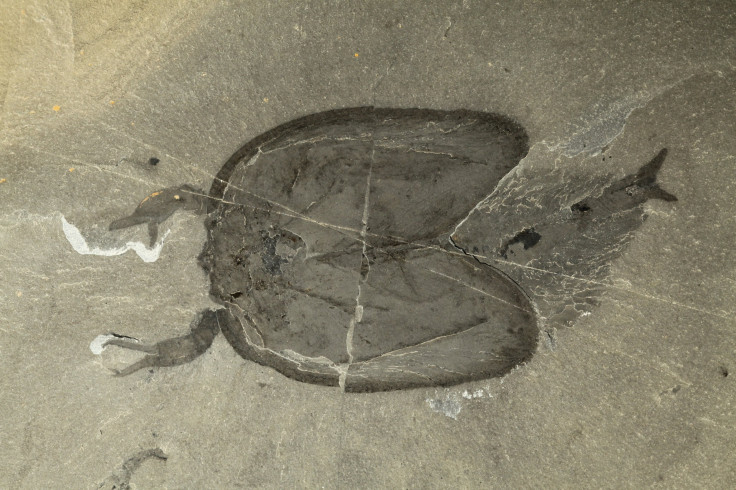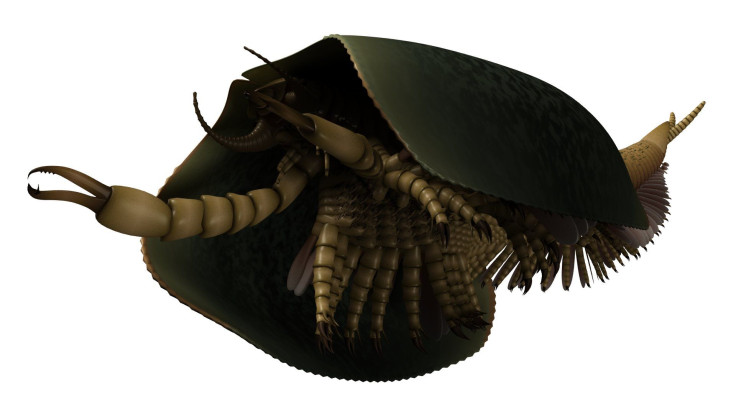Discovery Of Sea Creature That Lived 507 Million Years Ago Sheds Light On Mandibulate Evolution

Mandibulates are all organisms from the very large and hyperdiverse group that include, among others, ants, flies, centipedes, crabs and insects. It refers to creatures that have mandibles — a specialized pair of appendages used for grabbing and cutting/crushing food. And a new discovery is shedding light on how organisms in the group — the most abundant and diverse on Earth — evolved.
Paleontologists from the University of Toronto and the Royal Ontario Museum in Canada have found an “exceptionally well-preserved” fossil of a sea creature that lived 507 million years ago. Named Tokummia katalepsis by the researchers, the arthropod’s fossil was found in sedimentary rocks near Marble Canyon in Kootenay national park, British Columbia.
Arthropods are a widely-found group of invertebrate animals that have hardened exoskeletons and segmented limbs, and mandibulates are a sub-group. For its time in the Cambrian, T. katalepsis was among the largest predators in a tropical sea full of life. It exceeded 10 centimeters (almost 4 inches) when fully extended, and preferred to live on the floor rather than swim. Along with broad serrated mandibles, it also had specialized pincers — typical of modern mandibulates — that were shaped like modern can-openers.

“We think they might have been too fragile to be handling shelly animals, and might have been better adapted to the capture of sizable soft prey items, perhaps hiding away in mud. Once torn apart by the spiny limb bases under the trunk, the mandibles would have served as a revolutionary tool to cut the flesh into small, easily digestible pieces,” Cédric Aria, lead author of the study, said in a statement Wednesday.
The body of T. katalepsis has more than 50 segments and is covered by a two-piece broad structure that looks like a shell and is called a bivalve carapace. The bases of the limbs have tiny projections called endites which likely led to the evolution of legs in mandibulates, as well as to the mandibles themselves. T. katalepsis also lacks a second antenna typical to crustaceans, marking a shift toward terrestrial mandibulates.
The animal was named after Tokumm Creek, which flows through the area where the fossils were found, and the Greek word for “seizing.” A paper describing it was published Wednesday in the journal Nature under the title “Burgess Shale fossils illustrate the origin of the mandibulate body plan.”
© Copyright IBTimes 2024. All rights reserved.





















